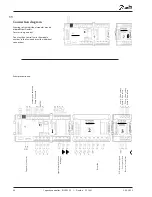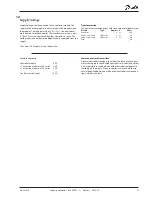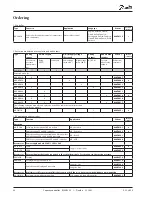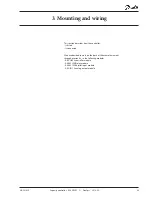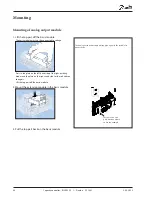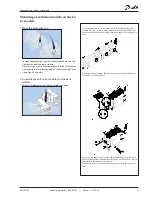
28
Capacity
controller RS8ER302 © Danfoss 2016-02
AK-CH
650
Preface to design
Be aware of the following when the number of extension modules
is being planned. A signal may have to be changed, so that an
additional module may be avoided.
• An ON/OFF signal can be received in two ways. Either as a
contact signal on an analog input or as voltage on a low or high-
voltage module.
• An ON/OFF output signal can be given in two ways. Either with a
relay switch or with solid state. The primary difference is the per-
mitted load and that the relay switch contains a cutout switch.
Mentioned below is a number of functions and connections
that may have to be considered when a regulation has to be
planned. There are more functions in the controller than the ones
mentioned here, but those mentioned have been included in
order that the need for connections can be established.
Functions
Clock function
Clock function and change-over between summer time and
winter time are contained in the controller.
The clock is zeroset when there is power failure.
The clock’s setting is maintained if the controller is linked up in a
network with a gateway, or a clock module can be mounted in the
controller.
Start/stop of regulation
Regulation can be started and stopped via the software. External
start/stop can also be connected.
Alarm function
If the alarm is to be sent to a signal transmitter, a relay output will
have to be used.
Extra temperature sensors and pressure sensors
If additional measurements have to be carried out beyond the
regulation, sensors can be connected to the analog inputs.
Forced control
The software contains a forced control option. If an extension
module with relay outputs is used, the module’s top part can
be with change-over switches – switches that can override the
individual relays into either OFF or ON position.
Data communication
The controller module has terminals for LON data communication.
The requirements to the installation are described in a separate
document.























